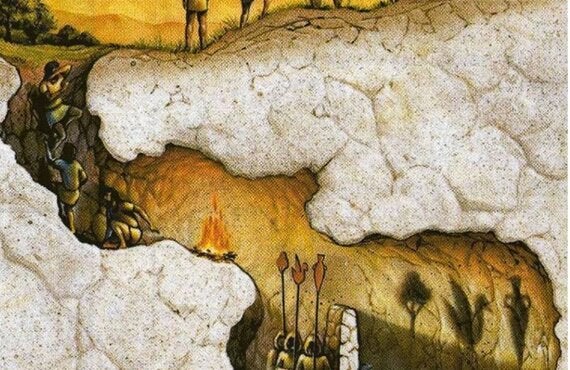When coming up with the ‘Analogy of the Cave’ in 500 AC, Plato would have been oblivious to the fact that one day, it would be used to provide context for ‘networked individualism’ in the digital age. Nonetheless, this is where we are right now, and you might as well enjoy the ride.

Plato envisions a cave, in which people are chained together, facing a wall opposite the opening of the cave. The people’s perception of the world ‘outside’ is shaped through the reflections against the wall they are facing- the two-dimensional figures dancing across the stone mark their reality. That is, until one day, one person is forcefully drawn away from the chain, outside the cave. She is blinded by the sudden rush of light, and the knowledge that realityexists beyond shadow-figures overwhelms her. It takes time as her eyes adjust to her new landscape, and her mind acknowledges its previous limits, and goes beyond them. If she’s thrown back inside the cave, made once again, part of the chain, she will experience a different kind of blindless- that of losing light. Meanwhile, those that never left the cave will look at her with pity, for leaving, and returning blind.[1]
A lot has changed since 500 AC. Humankind has progressed through the years, and with it, so have the ways in which human interactions are organized. One can look at Tönnies’ Gemeinschaft/Gesellschaft dichotomy, or even choose to take a step further and delve into Hegelian Individualism, only to reach what Rainie and Wellman call ‘Networked Individualism’.[2] Our interactions with one another, have evolved from family oriented, emotive communities (Gemeinschaft), into societies defined by more personal, rational engagements (Gesellschaft), with a clear shift in focus towards the singularity of the individual.[3] In hindsight, it becomes a relatively easy task to understand the external ‘triggers’ to these shifts. The industrial revolution and resultant urbanization process were the first blow to the breaking of the ‘family’ unit and the subsequent communities formed around it. This was shortly followed by contemporary modernization, and its production of the ‘individual’, driven by self-interest.[4] Finally, the ‘Triple Revolution’ (social network revolution, internet revolution, and mobile revolution), provides the platform for ‘networked individualism’, where we are left with Rania, her 200 phone contacts, 600 Facebook friends, and 900 Instagram followers.[5]
Ultimately, the atomization of social life goes to show the fluidity of human interaction, and the fact that it should be regarded as such.[6] Afterall, the Analogy of the Cave starts not through describing the millennia people spent in the cave, but from the moment before life as it was known, changed.
As such, if one comes to accept change to be the only constant- why is it that the study of individualism, and more specifically, networked individualism in a digital age, marked with a sense of nostalgia? The constant references to ‘good old days’, or the criticism of a ‘phone-addicted’ generation seem to characterize discourse surrounding analyses of contemporary social interactions.[7]
The point made here is not that the ‘digital world’ and the opportunities it offers are the equivalent of a blinding light after years in a cave. But rather, the understanding that change, for the better or worse, is foundational in human progress. Individuality, if allowing, can free one to discover their own conceptions of reality, and go beyond boundaries prescribed to them. Those rejecting it, much like the people in the cave, are condemned to two dimensional understandings of reality, and textbook applications of sociology.
[1] Plato (2008). The Republic, translated by B. Lowett, Project Gutenberg https://www.gutenberg.org/files/1497/1497-h/1497-h.htm
[2] Rainie, L. & Barry Wellman (2012). “The New Social Operating System of Networked Individualism” in Networked: The New Social Operating System, MIT Press, p.9
[3] Crossman A. (2019) Overview of Gemeinschaft and Gesellschaft in Sociology ThoughtCo.https://www.thoughtco.com/gemeinschaft-3026337
[4] Rainie & Wellman 2012 p.12
[5] Ibid 11
[6] Lumsden, S. (2020). Community in Hegel’s Social Philosophy. Hegel Bulletin, 41(2). doi:10.1017/hgl.2017.12, p. 178
[7]Examples include: Franco, P. (1999), Hegel’s Philosophy of Freedom. New Haven: Yale University Press.; Hartford, T. (2019). “How Behavioural Economics Helped Kick My Phone Addiction” Financial Times, https://www.ft.com/content/e82e5136-1921-11e9-b93e-f4351a53f1c3

